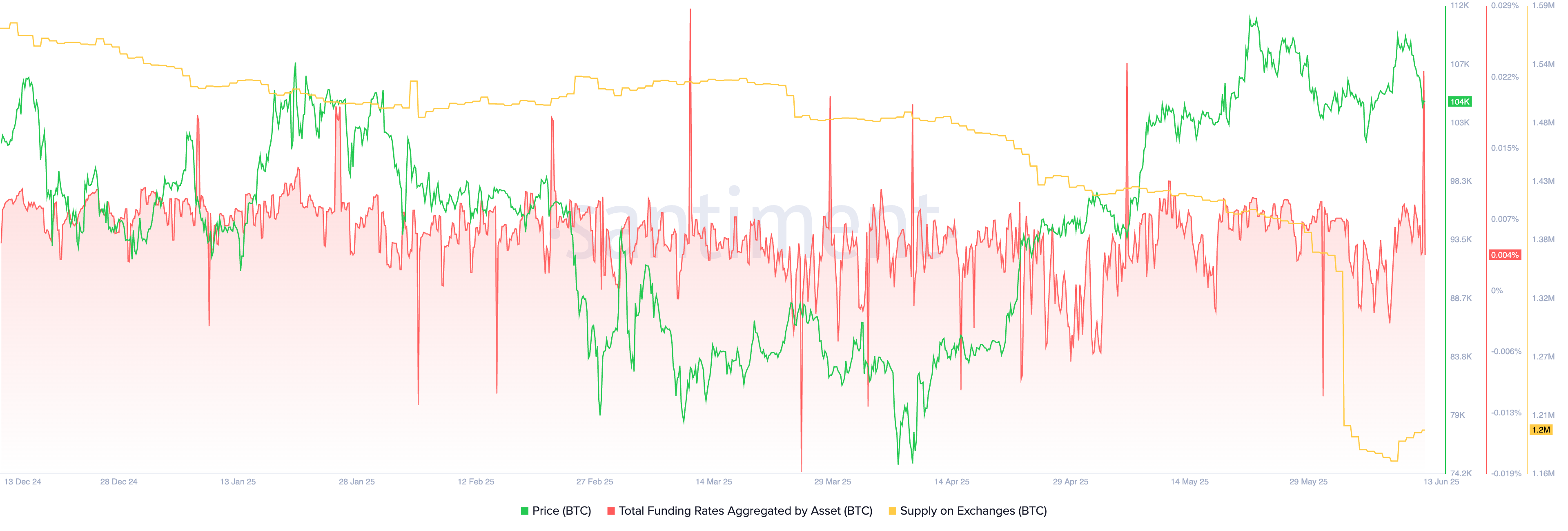Crypto prices crashed Thursday evening as investors embraced a risk-off sentiment following Israel’s attack on Iran’s nuclear sites, which could trigger a wider conflict in the region.
Bitcoin (BTC) plunged below $105,000, while the market capitalization of all cryptocurrencies tracked by CoinMarketCap fell to $3.26 trillion. The 24-hour liquidations jumped by 252% to over $1.15 billion, with 247,950 traders being liquidated.
Most altcoins performed worse than Bitcoin. SPX6900 (SPX) token plunged by 20%, while Fartcoin (FARTCOIN), Celestia (TIA), and Bonk (BONK) fell by over 15%.
The stock market also declined, with futures tied to the Dow Jones, S&P 500, and Nasdaq 100 falling by over 1%.
Is the crypto bull run still possible?
Israel’s attack on Iran’s nuclear sites will have some impact on the crypto market. In addition to triggering fear among investors, a prolonged war could push crude oil prices higher over time. Brent and West Texas Intermediate benchmarks rose by over 10% on Friday.
Higher crude oil prices could make inflation stickier and push the Federal Reserve to maintain interest rates higher for longer, affecting riskier assets like cryptocurrencies.
However, a look at past “black swan” events shows that Bitcoin and other altcoins tend to recover after the initial knee-jerk reaction.
For example, Bitcoin plunged to a multi-month low of $74,488 in April after Donald Trump delivered his “Liberation Day” speech, in which he announced retaliatory tariffs. Bitcoin then surged to a record high of $111,928 two months later.
Similarly, Bitcoin dropped from $10,480 to $3,948 in March 2020 after the COVID-19 pandemic began. It then surged a few months later and peaked at $68,897 in November 2021.
Bitcoin and other altcoins fell to $34,000 when Russia invaded Ukraine in 2022, then bounced back to nearly $48,000 a month later.
Therefore, there is a likelihood that Bitcoin and other altcoins will bounce back as the current fear subsides.
Bitcoin fundamentals and technicals
The main reason why the crypto bull run may continue is that Bitcoin, which influences the industry, has strong fundamentals and technicals.
Fundamentally, demand is rising as ETF inflows grow, with BlackRock’s IBIT now holding over $72 billion in assets. Companies like Trump Media, GameStop, Strategy, and MetaPlanet are accumulating the coin.
This demand is soaring as supply on exchanges and over-the-counter venues has plunged. Santiment data shows that supply on centralized exchanges has dropped to 1.2 million, down from 1.5 million in January.

As the chart above shows, Bitcoin’s funding rate has also surged — a sign that market participants expect it to bounce back.
Further, as crypto.news wrote here, this pullback is part of Bitcoin’s handle in the cup-and-handle pattern. This pattern often results in a strong bullish breakout, with Bitcoin’s target projected above $140,000.